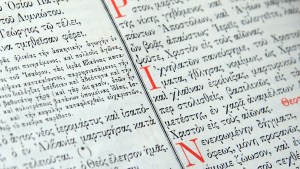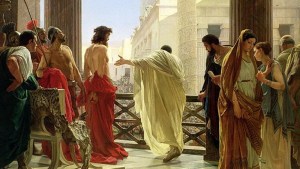During the first 300 years of Christianity, multiple letters and manuscripts were floating around early Christian communities, with no firm declaration of which book was “canonical” or inspired by God. In other words, the canon — what would come to be known as the Bible — didn’t exist yet.
Interestingly, one of the books that was quite revered was known as the “Shepherd of Hermas,” which received acclaim from some of the most influential Church Fathers.
According to the Catholic Encyclopedia, the Shepherd of Hermas was “a work which had great authority in ancient times and was ranked with Holy Scripture. Eusebius tells us that it was publicly read in the churches, and that while some denied it to be canonical, others ‘considered it most necessary.’ St. Athanasius speaks of it, together with the Didache, in connection with the deuterocanonical books of the Old Testament, as uncanonical yet recommended by the ancients for the reading of catechumens.”
It was sometimes put at the end of various collections of the New Testament, or even after the Acts of the Apostles, before the books were officially sorted out in the 4th century.

Read more:
Where did the Bible come from?
The book is itself a collection of “visions,” and is more focused on ethics than theology. Scholars believe it was written in the 2nd century, but it is unclear who the original author was.
Part of the book is a commentary on the 10 Commandments, giving specific instructions on various things to avoid. One interesting passage details the existence of a “good” angel and a “bad” angel who can influence a person. The author gives suggestions on how to discern the voice of each.
There are two angels with a man — one of righteousness, and the other of iniquity. And I said to him, How, sir, am I to know the powers of these, for both angels dwell with me? Hear, said he, and understand them. The angel of righteousness is gentle and modest, meek and peaceful. When, therefore, he ascends into your heart, immediately he talks to you of righteousness, purity, chastity, contentment, and of every righteous deed and glorious virtue. When all these ascend into your heart, know that the angel of righteousness is with you. These are the deeds of the angel of righteousness. Trust him, then, and his works.Look now at the works of the angel of iniquity. First, he is wrathful, and bitter, and foolish, and his works are evil, and ruin the servants of God. When, then, he ascends into your heart, know him by his works. And I said to him, How, sir, I shall perceive him, I do not know. Hear and understand said he. When anger comes upon you, or harshness, know that he is in you; and you will know this to be the case also, when you are attacked by a longing after many transactions, and the richest delicacies, and drunken revels, and various luxuries, and things improper, and by a hankering after women, and by overreaching, and pride, and blustering, and by whatever is like to these. When these ascend into your heart, know that the angel of iniquity is in you. Now that you know his works, depart from him, and in no respect trust him, because his deeds are evil, and unprofitable to the servants of God.
However, while many early Christians regarded this book as inspired by God, there were some passages that were ambiguous and did not have the clarity of the rest of the New Testament. Also, since the original author was not known, the text received much criticism from members of the Church.
It still remains an intriguing look into early Christianity, and reflects many of the views of Christians during the Church’s infancy. Even though it did not make the cut, the book is worthy of mention and study.

Read more:
Historical evidence proves the existence of 23 figures in the New Testament

